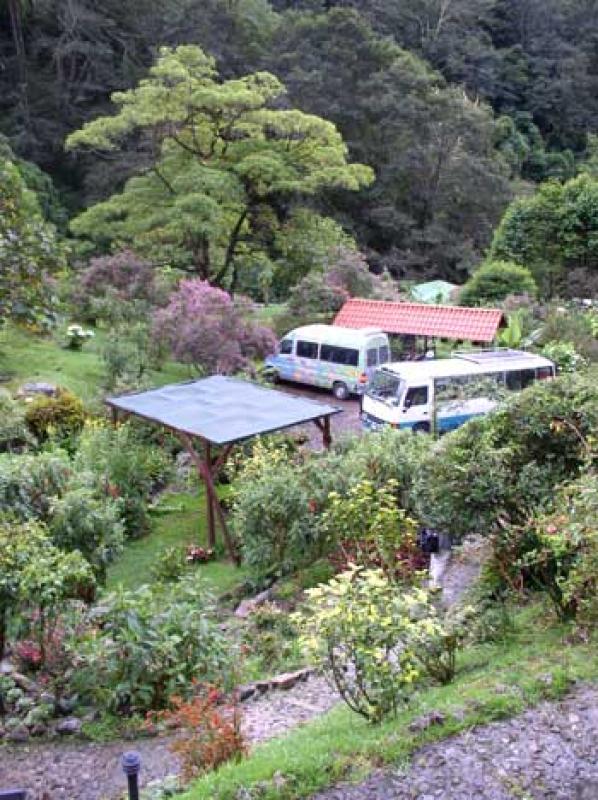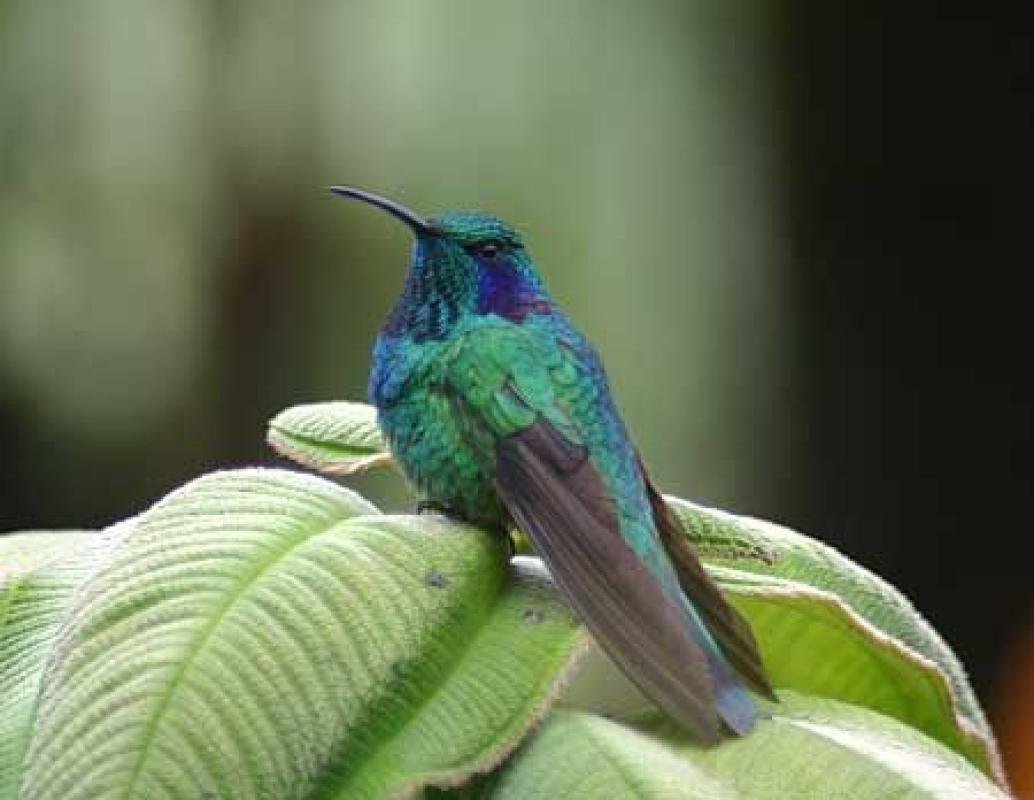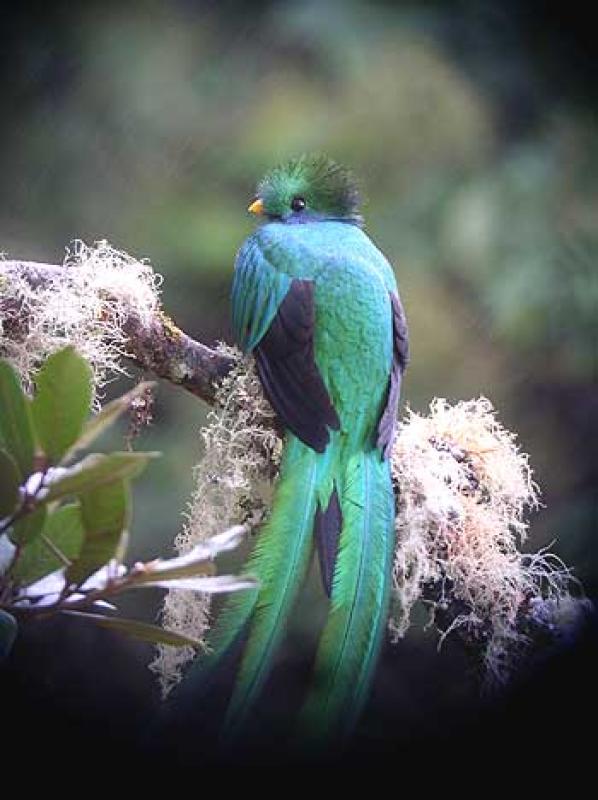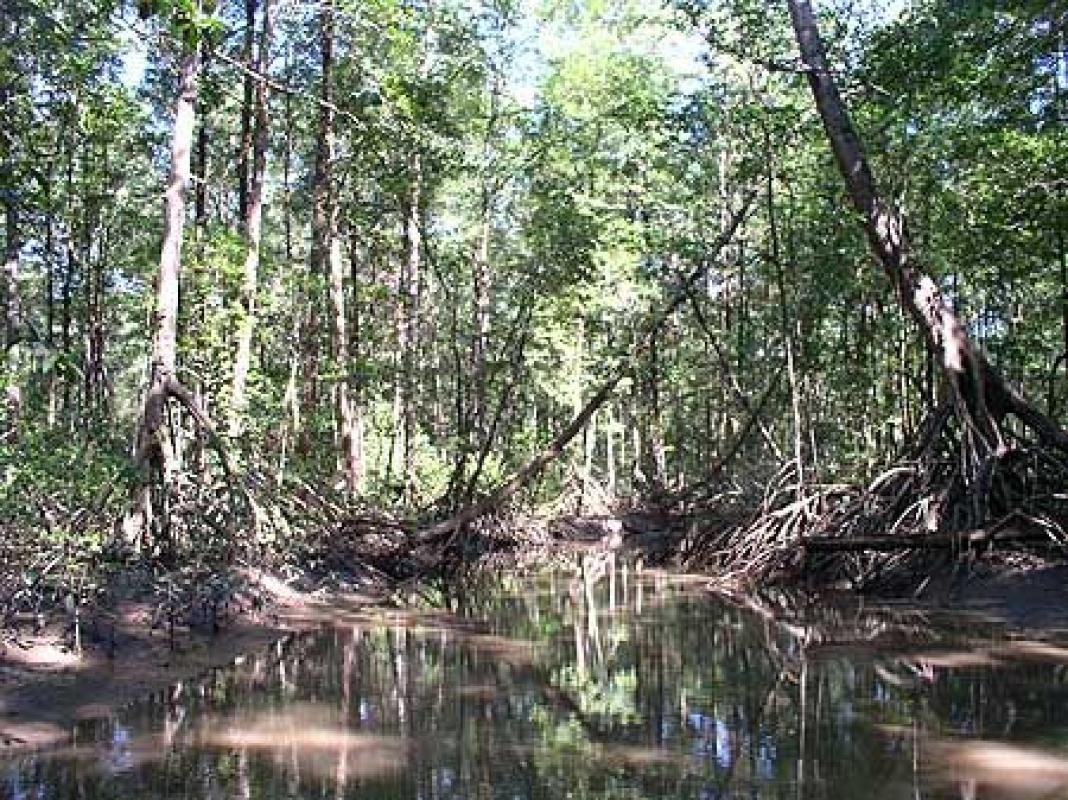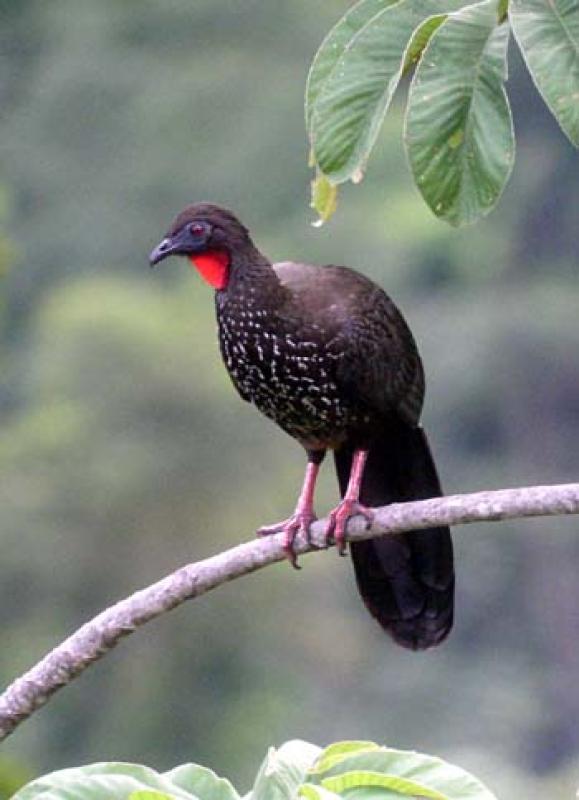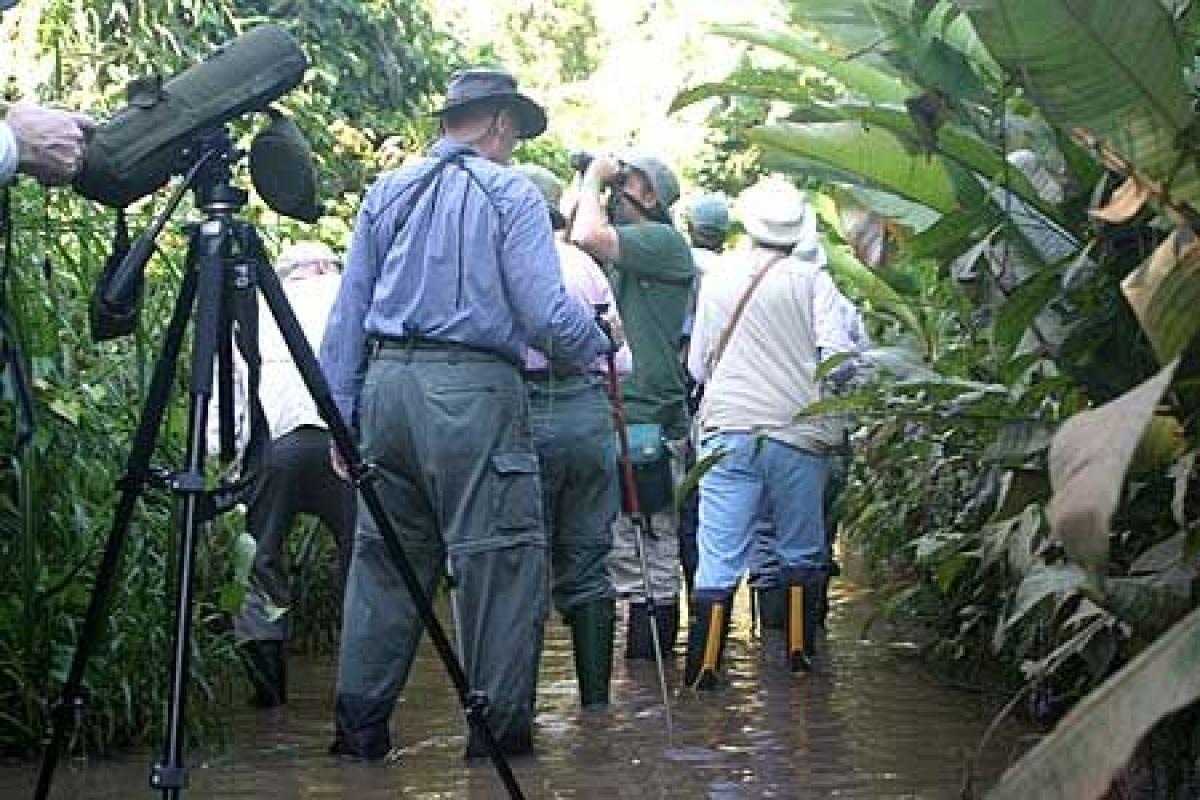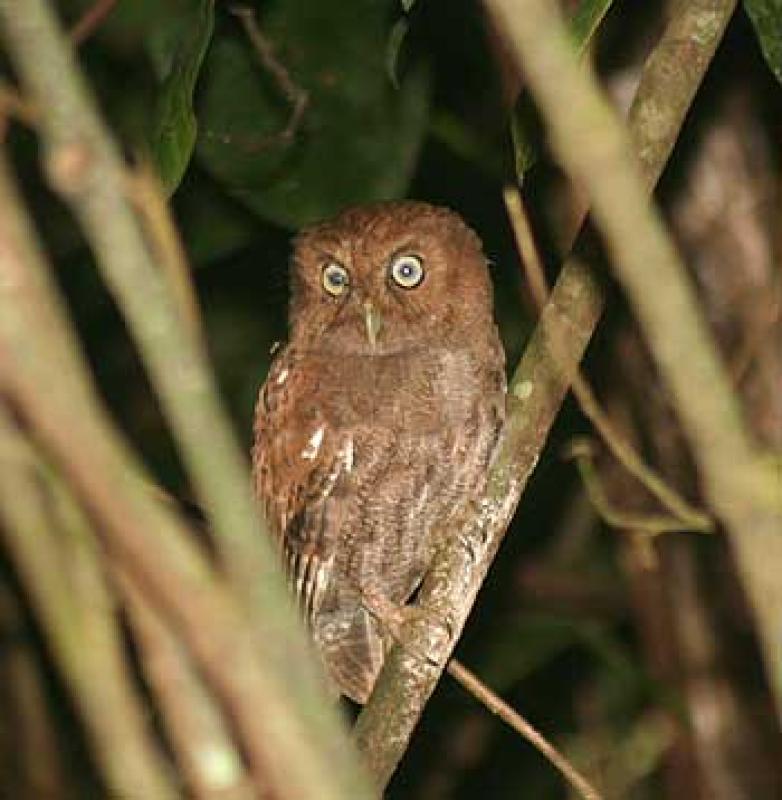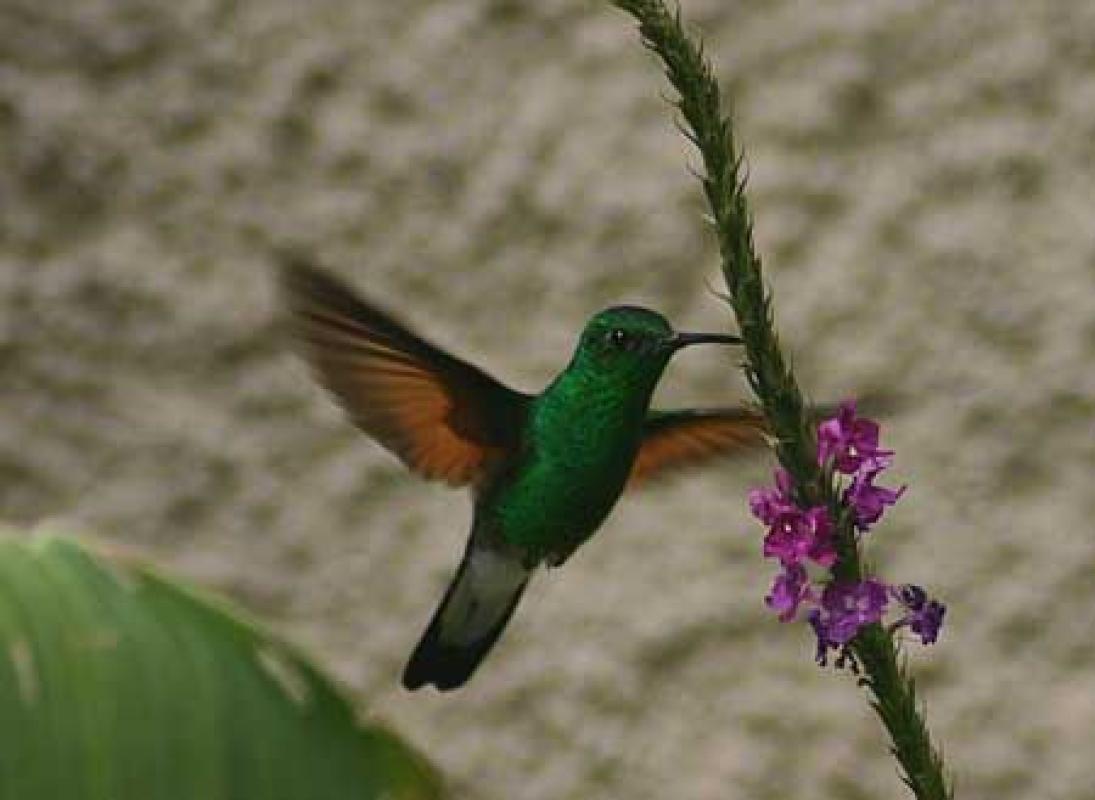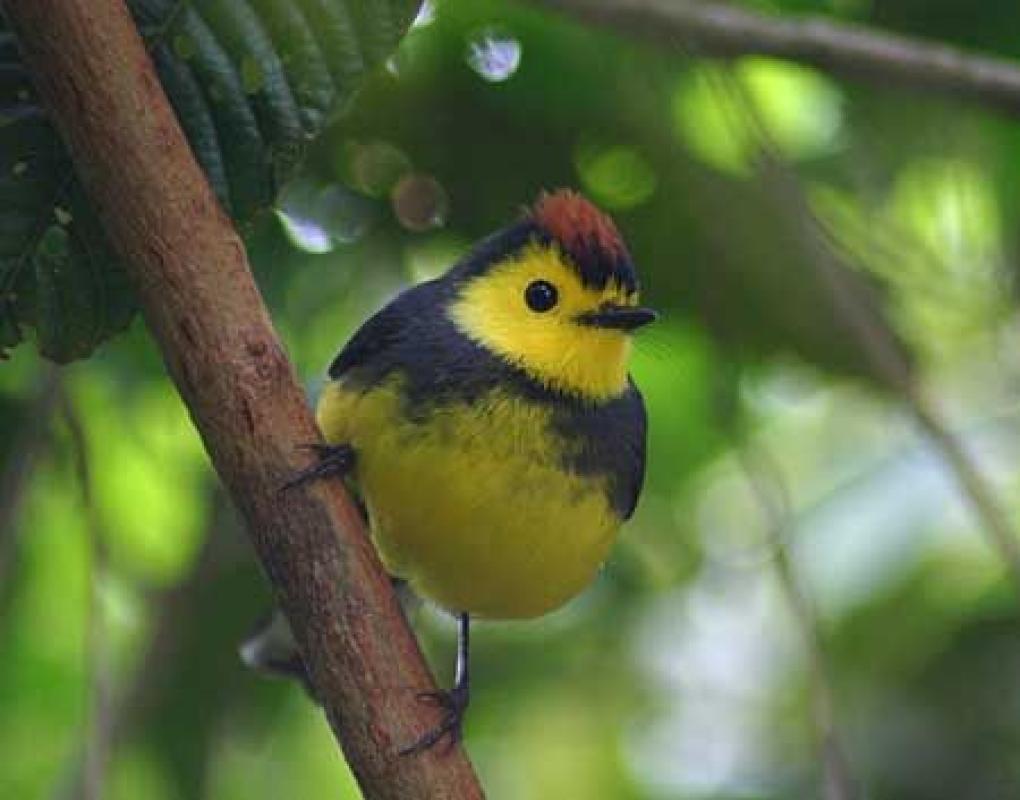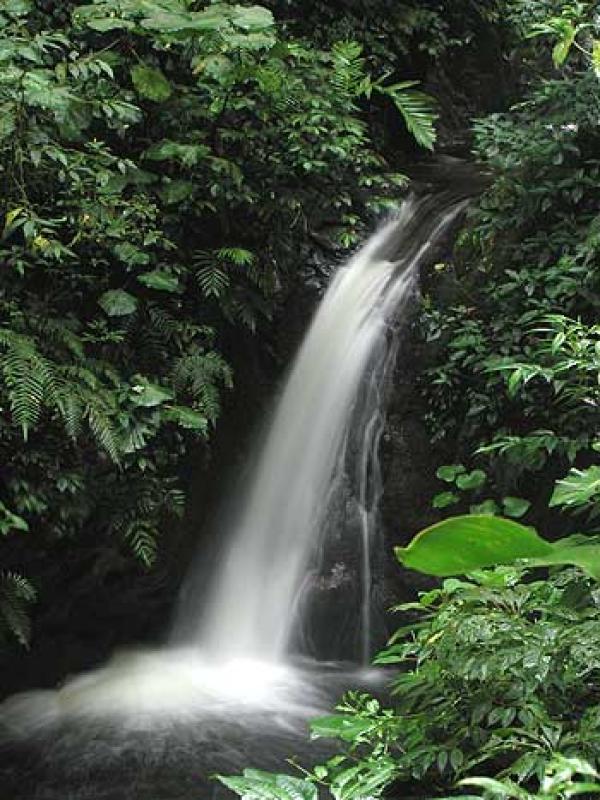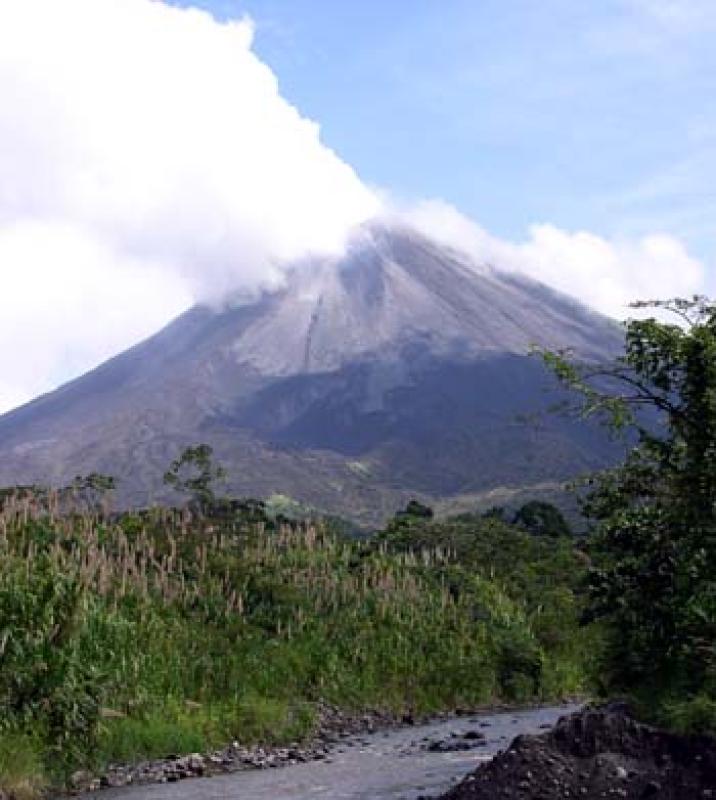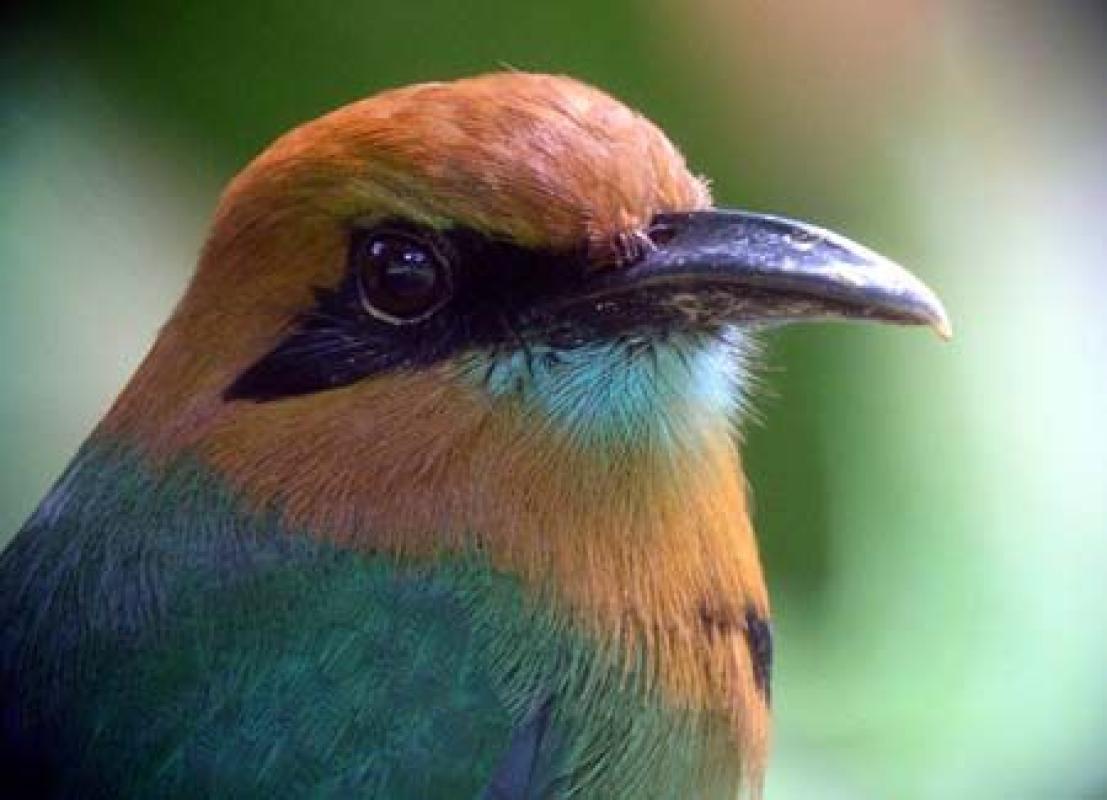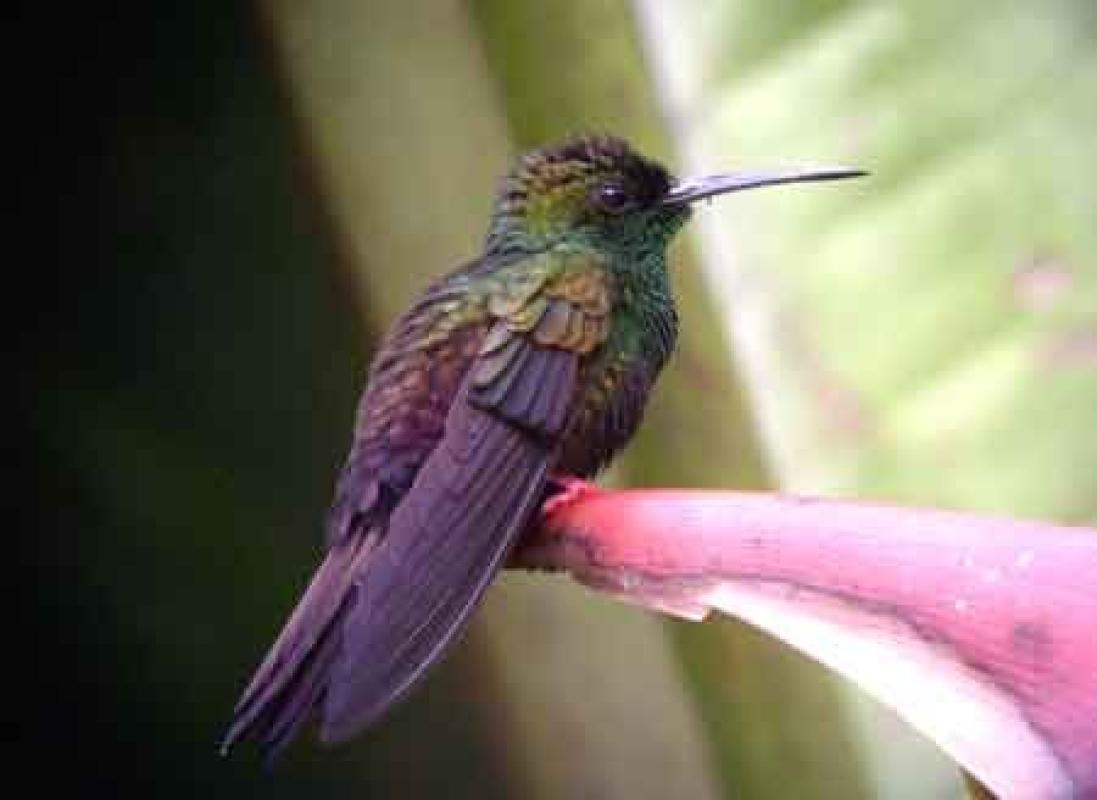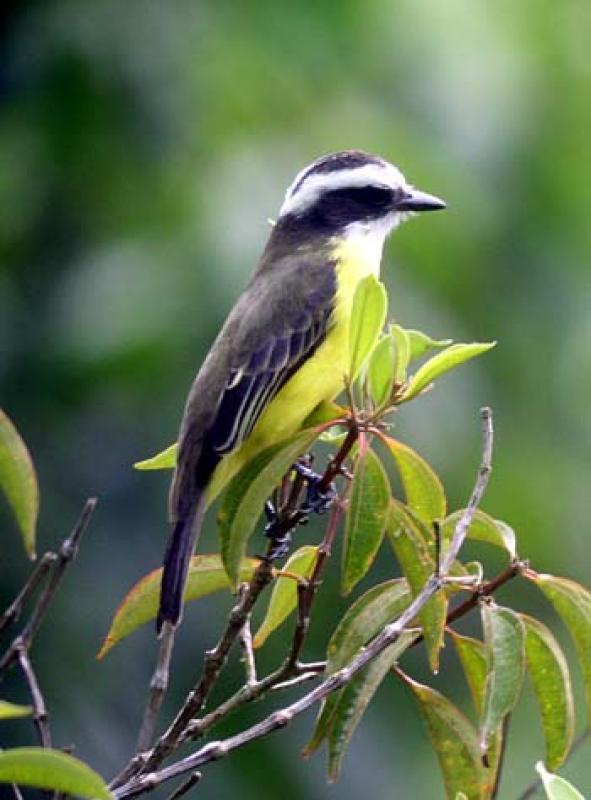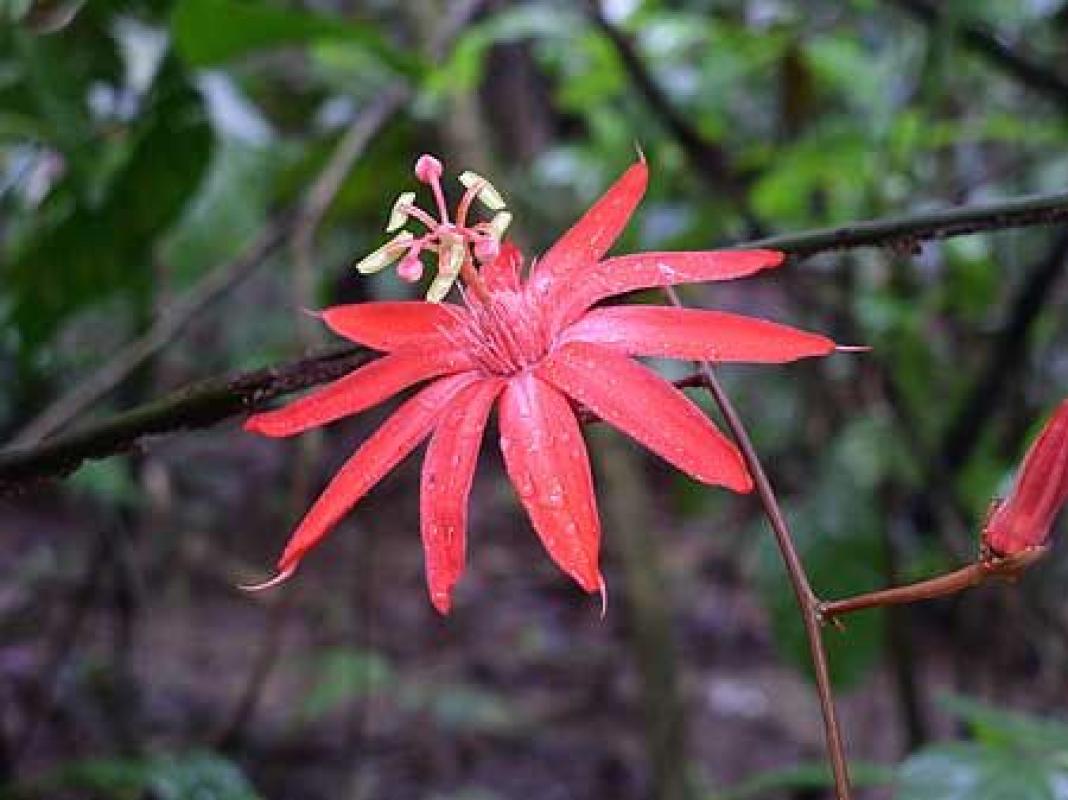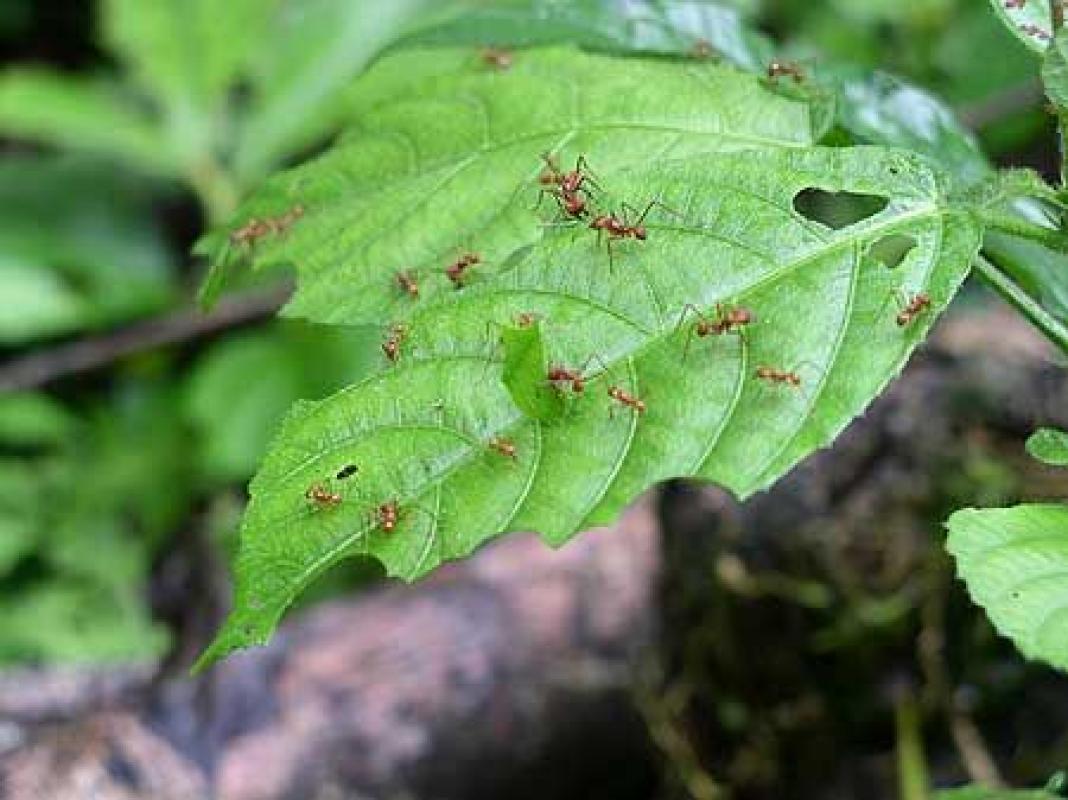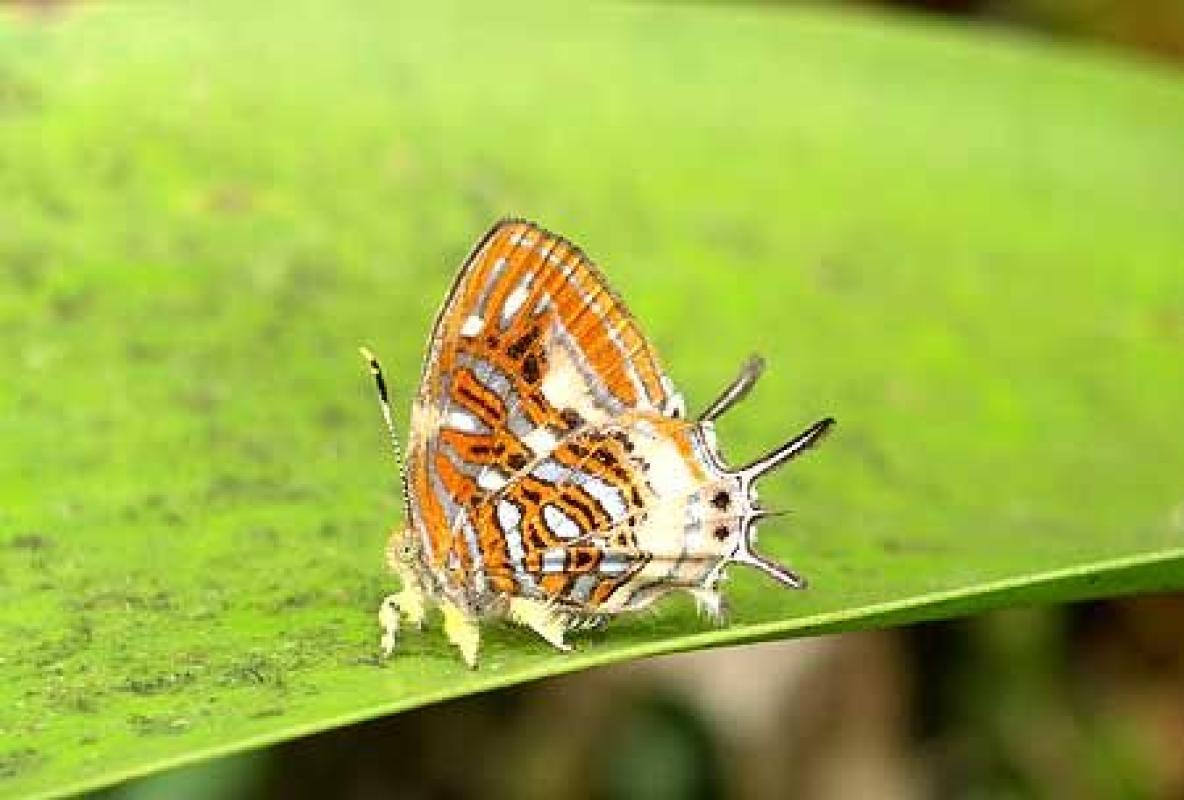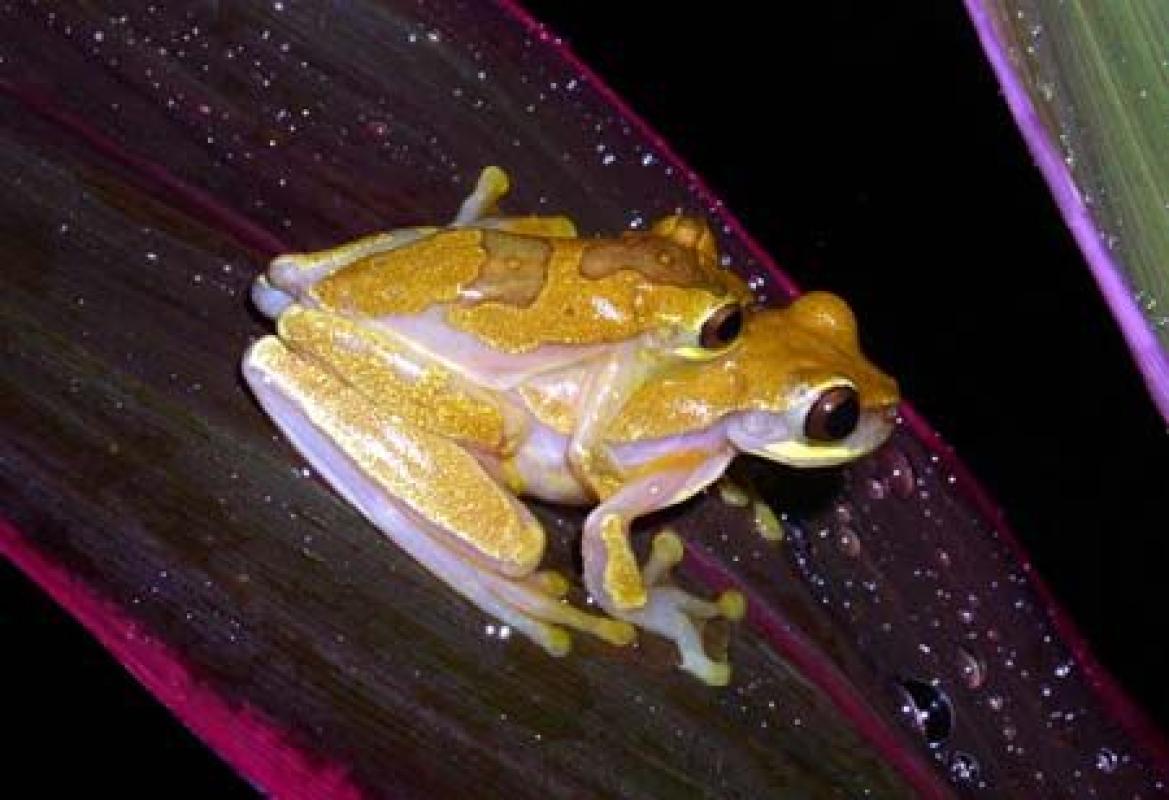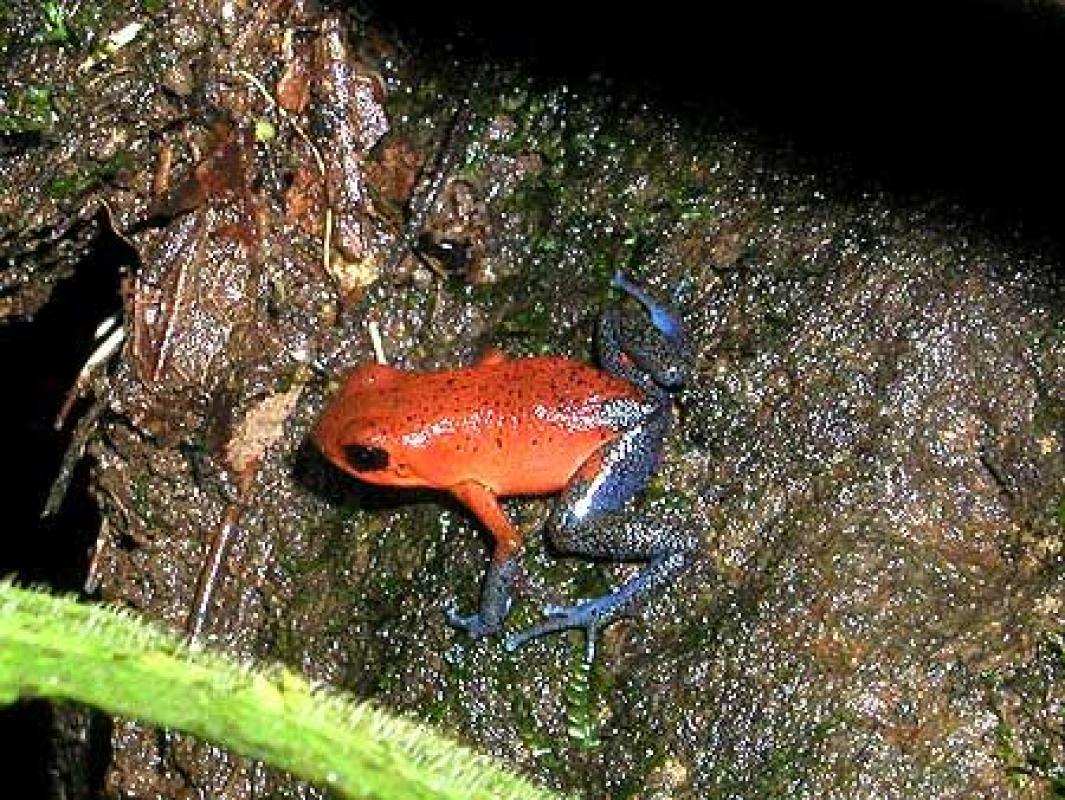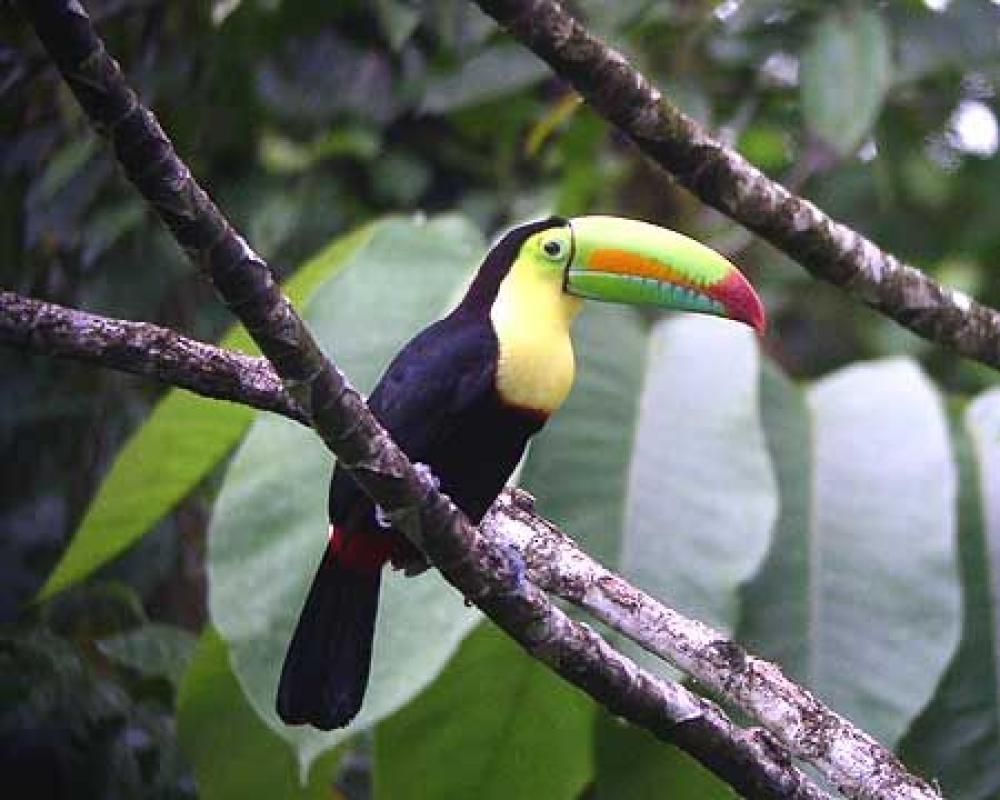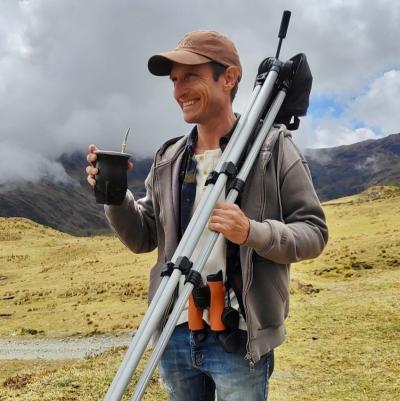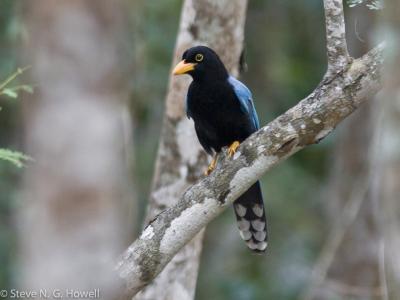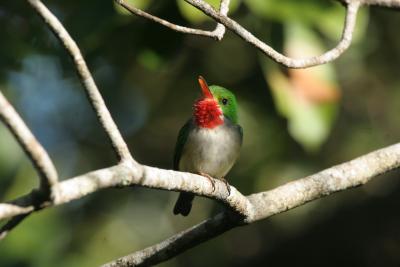Costa Rica in Fall
-
Sep 28 to Oct 12 2026
Roland Rumm
2026
Single Room Supplement $790
2026
Single Room Supplement $790
With an area somewhat less than 20,000 square miles Costa Rica, is the third-smallest nation in Central America; yet in proportion to the country’s size its avifauna of nearly 900 species is among the richest in the world. It is a modern country, politically stable and generally considered the most democratic in Central America, and it is proud to be a nation without an army. For the visiting birdwatcher Costa Rica presents the obvious advantage of compactness combined with the variety resulting from the country’s division by major mountain ranges, or cordilleras: one can pass readily from San José on the Central Plateau to cloud forest, to subalpine páramo at nearly 11,000 feet, to the wet tropical forest of the Caribbean slope. Its well-studied biology also makes it an ideal destination—it was one of the first countries in the Neotropics to have its own field guide to the birds, and guides to the country’s butterflies, reptiles and amphibians, and mammals are also available, making possible a complete natural history experience.
Day 1: The trip begins at 7 p.m. in San José. Night in San José.
Day 2: The Cordillera de Talamanca, much of which is protected as either national park or forest preserve, forms the largest massif of the Central American highlands. Shared with Panama, these mountains are home to one of the richest endemic bird areas in the world. One national park, Tapantí, is only a short distance from San José, and we’ll spend the first half of the day exploring its lush cloud forest, noted for orchid-laden trees, tree ferns, giant Gunnera thickets, and clearwing butterflies that sparkle in the understory. Here we’ll have our first chance at many montane forest species such as White-bellied Mountain-gem, Golden-bellied Flycatcher, Torrent Tyrannulet, and Spangle-cheeked and Bay-headed Tanagers. Silvery-fronted Tapaculo and Wrenthrush, two of the most sought-after regional endemics, are also the most difficult to see, and we’ll search diligently for them. In the afternoon we may have time to stop in the elfin moss forest on the Continental Divide before we drop down into a steep valley to our lodge. Night in San Gerardo de Dota.
Day 3: Our hotel is situated in the midst of an oak forest on the Pacific slope of the Cordillera de Talamanca, and we’ll have easy access to most of the montane species endemic to these highlands. Birding along dirt roads, we’ll encounter many new species including Fiery-throated Hummingbird, Yellow-winged Vireo, Mountain Robin, Flame-throated Warbler, Sooty-capped Bush-Tanager, and Yellow-thighed and Large-footed Finches. Practically within walking distance from our hotel we’ll have our first chance at seeing the magnificent Resplendent Quetzal and the furtive Emerald Toucanet as they feed on the miniature avocados of the aguacatillo Nectandra trees. At local hummingbird feeders we can expect White-throated Mountain-gem, Green Violet-ear, and Scintillant Hummingbird. In the afternoon we’ll continue up to Cerro de La Muerte, where in the Swallenochloa bamboo thickets above treeline we’ll look for high-elevation specialists such as Timberline Wren, Peg-billed Finch, and Volcano Junco. If it’s sunny we might be treated to a Green Spiny-Lizard or the black-and-emerald-speckled Highland Alligator Lizard. Depending on the weather, we’ll probably have an evening foray in search of Dusky Nightjar. Night in San Gerardo de Dota.
Day 4: After a final look for any specialties we may have missed – perhaps Black-cheeked Warbler, Buffy Tuftedcheek, or Ochraceous Pewee – we’ll drop out of the highlands and work our way south. We’ll make opportunistic roadside stops as we start noticing more and more tropical birds from the bus, such as Roadside Hawk, Gray-capped Flycatcher, or perhaps even Pearl Kite or Streaked Saltator. As we continue down to the Pacific lowlands near Golfito and on to the more humid Piedras Blancas National Park, roadside birds could include such tropical excitement as Yellow-throated Toucan, Crested Guan, and Golden-naped Woodpecker. Night at Esquinas Rainforest Lodge.
Days 5-6: The Esquinas Rainforest Lodge, and adjacent Piedras Blancas National Park, and road from La Gamba offer access to most of the bird specialties from the Osa Peninsula such as Black-cheeked Ant-Tanager, Striped Woodhaunter, Charming Hummingird, White-crested Coquette, Gray-headed Tanager, Marbled Wood-Quail, Black-bellied Wren, Riverside Wren, Black-striped Woodcreeper, Tawny-winged Woodcreeper, Orange-collared Manakin, Red-capped Manakin, White-throated Shrike-Tanager, Red-rumped Woodpecker, Golden-naped Woodpecker, Baird’s Trogon, Band-tailed Barbthroat, Bronzy Hermit, White-tipped Sicklebill, Black-faced Anttrush, Chestnut-backed Antbird, Little Tinamou, Great Tinamou, and Great Curassow, which is often seen cruising the grounds of the lodge. With some luck we may also see Yellow-billed and Turquoise Cotinga during our stay. The birding in this area is extremely rich, and day lists of over 100 species. Nights at Esquinas Rainforest Lodge.
Day 7: The first stop on our way north today will most likely be the Rincón bridge where the old-growth rainforest and mangroves are home to the rare and declining Yellow-billed Cotinga. This snow-white, silent member of the cotinga family is often seen flying back and forth from fruiting trees in the forest to the mangroves where they breed. We’ll also have a chance for the endemic Mangrove Hummingbird, which requires the piñuela tree, found only in this country’s Pacific coast mangrove forests. The roadside birding as we pass north through a mosaic of forest and agricultural land could produce Southern Lapwing (a recent immigrant), Brown Capuchin, or even a Three-toed Sloth in roadside cecropia trees. Stopping at bridges has resulted in eye-popping views of Red-legged Honeycreeper below eye level—deep purple with a shiny sky-blue crown—several species of kingfisher, and Mangrove Swallow, while wet ditches and roadside ponds have been good bets for Bare-throated Tiger-Heron, Northern Jacana, and groups of Wood Storks and Roseate Spoonbills. We’ll arrive at our next hotel in the late afternoon, leaving us time to enjoy the grounds. Night near Carara.
Day 8: We’ll have a couple early morning hours on a boat ride on the Tárcoles River and through the mangrove forest, where Southern Lapwing, Collared Plover, Black-necked Stilt, Mangrove Vireo, and Yellow-naped Parrot are some of the target birds. In the late morning until lunchtime we’ll pass through pastureland and patches of tropical deciduous forest where we could see such new species as Cinnamon Hummingbird, Plain-capped Starthroat, Turquoise-browed Motmot, Rufous-naped and Banded Wrens, White-lored Gnatcatcher, Olive Sparrow, Double-striped Thick-knee, and possibly the elusive Lesser Ground-Cuckoo, with lunch at a lodge on the Gulf of Nicoya coast. We’ll spend the afternoon driving to a more comfortable elevation in the Cordillera de Tilarán. Night in Monteverde.
Day 9: We’ll spend most of today in the Monteverde Cloud Forest Reserve, a 7,400-acre tract of mid-elevation forest traversed by the Continental Divide and one of the best-known birding localities in Central America. In spring the preserve is famous for its nesting Resplendent Quetzals and calling Three-wattled Bellbirds—audible a mile away. We’ll search for these, of course, and for many other species including Orange-bellied Trogon, Prong-billed Barbet, Lineated Foliage-gleaner, Streak-breasted Treehunter, Tawny-throated and Gray-throated Leaftossers, Azure-hooded Jay, Slaty-backed Nightingale-Thrush, Costa Rican Warbler, Golden-browed Chlorophonia, and Chestnut-capped Brushfinch. If we’re lucky we may encounter one of the area’s difficult-to-see specialties, such as Black-breasted Wood-Quail or Buff-fronted Quail-Dove. We’ll also visit the Hummingbird Gallery at the entrance to the cloud forest reserve, where we’re likely to see up to eight species of hummingbird including numerous Violet Sabrewings and Coppery-headed Emerald. Night in Monteverde.
Day 10: We’ll begin our final morning at Monteverde with a visit to the decidedly drier forest of the private Santuario Ecológico. The birds in this type of forest are quite different from those found only a couple miles away in the wetter preserve, and we’ll have a chance of seeing Long-tailed Manakin, Golden-crowned Warbler, White-eared Ground-Sparrow, and possibly Chiriqui Quail-Dove and Orange-billed Nightingale-Thrush. In recent years this has been the best area for bellbirds when they are calling. Before lunch we’ll depart for the Caribbean lowlands, passing around the reservoir of Lake Arenal, and approaching the volcano of the same name. In the forest near the volcano we’ve seen lowland species such as Slaty-tailed Trogon, White-fronted Nunbird, Keel-billed Motmot, and the adorable Black-headed Tody-Flycatcher. We’ll have the later afternoon to explore these foothill habitats around the volcano on the way to our lodge. If it’s clear, the view of the volcano from our rooms is breathtaking. Night near Arenal Volcano.
Days 11–13: We’ll spend the morning of day 11 birding trails in the Arenal region. The trail here takes us through an excellent patch of foothill forest, where we hope to find Dull-mantled and Spotted Antbirds, Carmiol’s and White-throated Shrike-Tanagers, Streak-crowned Antvireo, and perhaps the rare Lattice-tailed Trogon. Great Curassow is now more common and confiding than in the past, making it almost a certain thing. After lunch near Arenal Volcano, we’ll continue to the Sarapiquí region for two full days.
On one day we’ll visit La Selva, a biological station operated by the Organization for Tropical Studies. This roughly 1,400-acre reserve is adjacent to Braulio Carrillo National Park and is managed as a natural research laboratory. About 475 species of birds have been recorded at La Selva, and although we won’t see that many in a one-day visit, we’ll certainly experience the avian richness of the region. La Selva is an excellent place to see Great and Slaty-breasted Tinamous, Rufous and Broad-billed Motmots, Keel-billed Toucans, Pied and White-necked Puffbirds, Great and Fasciated Antshrikes, Black-throated and Gartered Trogons, Snowy Cotinga, White-ringed Flycatcher, Stripe-breasted Wren, Plain-colored Tanager, Black-headed Saltator, and Chestnut-colored, Cinnamon, and Rufous-winged Woodpeckers, among many, many others. Our visit to La Selva will be an especially memorable part of the trip.
On another day we’ll visit Braulio Carrillo National Park. This park, which protects one of the last untouched expanses of Caribbean foothill forest in Central America, is only a 25-minute drive from our hotel. We’ll have all day to search the forest trails for such specialties as Lattice-tailed Trogon, Yellow-eared Toucanet, White-ruffed Manakin, Black-headed Nightingale-Thrush, and Blue-and-gold, Black-and-yellow, Emerald, Carmiol’s, White-throated Shrike-, and Tawny-crested Tanagers. With luck, we may see one of the truly rare species found in the park, such as Sharpbill or Lanceolated Monklet. We’ll likely have time to stop at a patch of roadside flowers where in the past we have found Snowcap and Black-crested Coquette. Nights in the Sarapiquí region.
Day 14: We’ll depart early enough to do some birding along the way back to San José and have lunch at a roadside location where hummingbird and fruit feeders will entertain against a beautiful rainforest backdrop. We'll arrive at our hotel in Heredia in time to pack and enjoy a farewell dinner. Night in Heredia.
Day 15: The tour concludes this morning in San José.
Note: The information presented below has been extracted from our formal General Information for this tour. It covers topics we feel potential registrants may wish to consider before booking space. The complete General Information for this tour will be sent to all tour registrants and of course, supplemental information, if needed, is available from the WINGS office.
ENTERING COSTA RICA: U.S. citizens entering by air need a U.S. passport valid for at least six months after your scheduled departure date from Costa Rica and a tourist card (issued by your arriving airline). Citizens of other countries may need a visa and should check their nearest Costa Rican embassy. If required by the embassy or visa-granting entity, WINGS can provide a letter for you to use regarding your participation in the tour.
COUNTRY INFORMATION: You can review the U.S. Department of State Country Specific Travel Information here: https://travel.state.gov/content/travel.html and the CIA World Factbook here: https://www.cia.gov/the-world-factbook/. Review foreign travel advice from the UK government here: https://www.gov.uk/foreign-travel-advice and travel advice and advisories from the Government of Canada here: https://travel.gc.ca/travelling/advisories.
HEALTH: Medical services are good. Essential medicines are available. Drinking water is purified in San José hotels and restaurants. Costa Rica is an extremely sanitary country and it is our experience that water can be consumed throughout the country without ill effect. Still, we suggest bringing a bottle (or tablets) of Pepto Bismol or some other mild anti-diarrhea medication.
The more serious health hazards — amebic dysentery, malaria and typhoid — are rare. The Centers for Disease Control and Prevention (CDC) mentions a risk for malaria in some provinces of Costa Rica but our ground agent assures us that none of the places we visit during our tours have reported cases of the disease, and the reported cases in the country have not been of tourists. The ground agent’s position is that there are unpleasant side effects of the anti-malaria drug, while the chances of getting malaria in Costa Rica are slim. It’s better just to bring (and use liberally) a good insect repellent, and when hiking in the forest, wear lightweight long pants and lightweight long-sleeved shirts. Your best prevention is to avoid being bitten.
The most current information about travelers’ health recommendations can be found on the Centers for Disease Control’s Travel Health website here: https://wwwnc.cdc.gov/travel/destinations/list
PACE OF THE TOUR: All days will begin with early breakfasts, usually at 5:00 or 5:30 a.m. (at least one day on the March and November tours will begin with a 4:30 a.m. breakfast). Early mornings beg early bedtimes — most participants opt to turn in right after dinner. On one or two travel days, we may arrive at our hotel after dark. There will be several optional forays for owls, nightjars, and potoos by foot and/or bus, so a good flashlight or headlamp is important. People in reasonably fit condition will not find the walking especially rigorous. At Monteverde and Cerro de la Muerte, we’ll walk up and down roads and trails. Because of the altitude and the birding, we’ll walk slowly. At Braulio Carrillo National Park and at Monteverde, the trails can be steep with many odd-sized and steep steps, and although we do not walk these trails at a strenuous pace, they can be treacherous in spots, particularly for participants with knee problems. Good footwear is essential, and walking sticks are useful.
We will be at an elevation of 11,000 feet briefly one day; otherwise, our birding will be below 8,000 feet.
CLIMATE: Costa Rica’s climate varies with altitude. Temperatures will range from the 50s in the mountains to as high as the low 90s at lower elevations (rarely above 85 during the trip). San José, at an altitude of 3,800 feet, can be cool. There will probably be some rain and at higher elevations, mist and wind. We birdwatch one day at elevations between 9,000-10,900 feet; temperatures may be cool, and mist and/or rain are possible. Some tours experience more rain than others, especially in the eastern lowlands.
ACCOMMODATIONS: Our hotels and lodges are always comfortable and usually the best available. All but one of our lodges have private bathrooms with hot water. Bathrooms have tubs or showers or both.
FOOD: Food in Costa Rica is not known for being distinctive, but it is consistently very good to excellent and not remotely spicy. Fresh fruit, green vegetables, and tasty main dishes are served at our hotel restaurants and are safe to eat. A well-liked staple for breakfast is gallo pinto, a mix of rice and beans, though cereals, eggs, and fresh fruit are also available. A popular dish is the casado, with sides of beans, rice, plantain, and salad, along with a meat or sometimes a vegetarian option.
Food Allergies / Requirements: We cannot guarantee that all food allergies can be accommodated at every destination. Many restaurants offer set menus and are unable to accommodate all special requests within a group. Participants with significant food allergies or special dietary needs should bring appropriate foods with them for those times when their needs cannot be accommodated. Our tours are carefully scheduled to insure the best possible birding experience. Meal times can generally not be adjusted; any participant who needs to eat earlier or later than the times scheduled for the group should bring supplemental food.
TRANSPORTATION: We will be traveling by comfortable, air-conditioned minibuses.
This tour is limited to eight participants with one leader.
Maximum group size eight with one leader.
